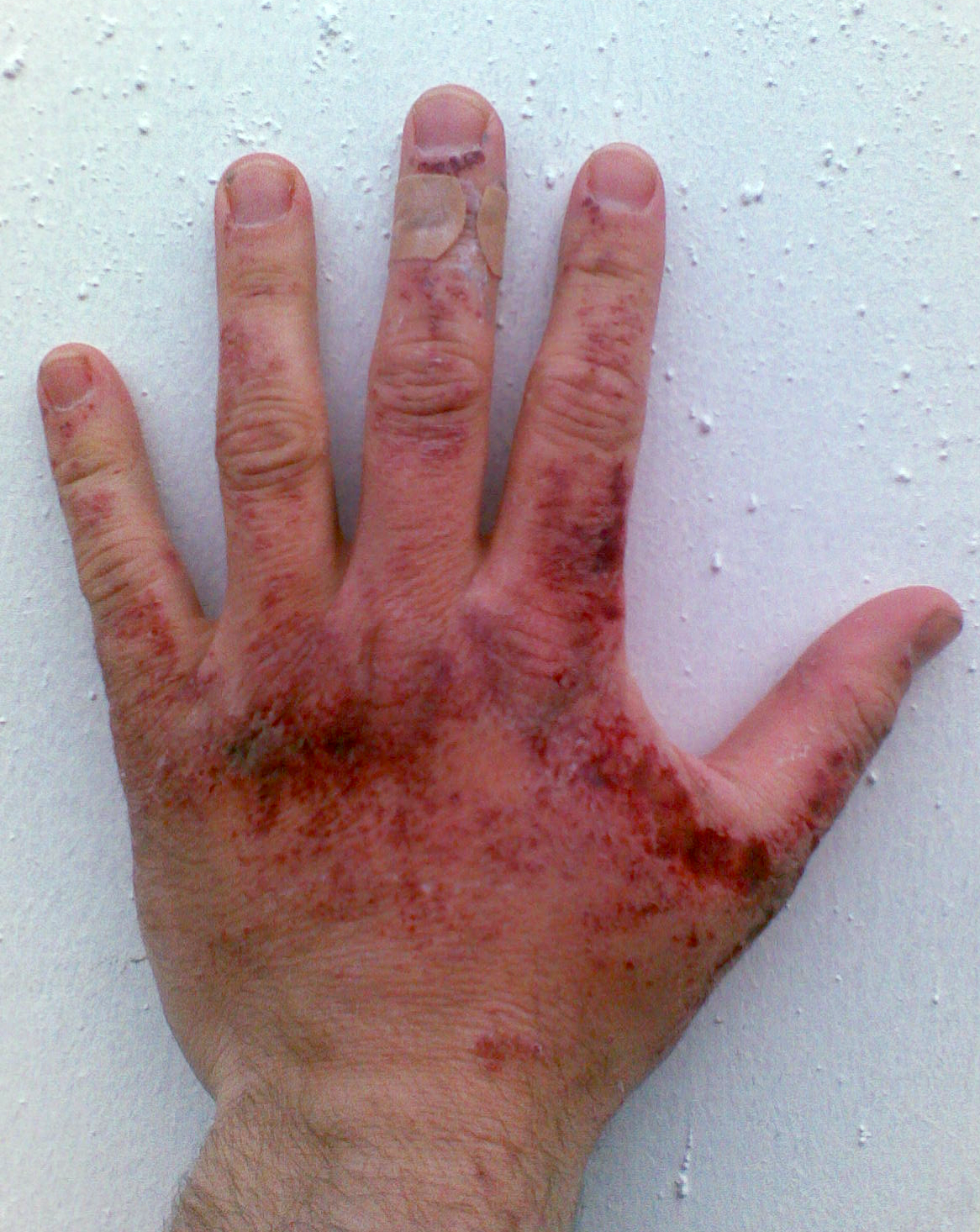Remember that burns stay shiny and can be coloured around the edges. Burns always come from within to out.
Here are a few examples of different types of burns:
 |
| Mild acidic burn |
 |
| Third degree burn |
 |
| Blisters caused by burns |
Materials that you will need to create burns:
Tissue
Latex
Collodien
Mastix Glue
Gelatine
HEALTH AND SAFTEY
You can combine all these materials together to build up your burn, however, if you are using Mastic glue, make sure that you have the remover, if you do not have the remover, do not use it as it will be very difficult to remove.
If you are using latex, make sure your artist is not allergic to latex, you must do a test beforehand to make sure. Someone who is allergic to latex will get a reddish rash, if this happens, make sure to remove all of the latex immediately.
Gelatin needs to be heated in order to achieve its runny consistency, the best way to do this is to heat the gelatine in a microwave. You can add materials into the gelatine, however, it is best to add the materials, such as glitter, afterwards. You cannot microwave any kind of metal substance. Make sure to not over heat the gelatin as it can become very hot very quickly, test before you apply to the artist.
Gelatin is completely harmless.
My attempt at creating a burn:
To create the burn above, I followed the procedure below.
1. Start with a clean surface. Cleanse and tone the skin. However do not moisturise as this might cause any latex, glue or collodien we will use later to slip off. To create a boundary between the makeup and the skin, apply derma shield.
2. Rip apart layers of tissue. Tear into small pieces. Make sure all the sides of the tissue are jagged.
3. Place the tissue to the area of skin. and apply collodien over the top generously. Wait to dry before building up the layers. You want to create edges, as though a hole has been burnt through the skin. You can crinkle the tissue to have a thicker layer on the edges of the burn.
4. When the collodien is dry, you can tear the tissue to create burn holes on the wound with small tweezers, remember to be gentle, you don't want to hurt your artist or create too much of a hole.
5. Colour the wound. I used the aqua palette from Kryolan, you want a mix of skin tones, deep reds, and charred blacks and greys.
6. Go over the inside of the wound with a layer gelatine to create the shiny flesh effect. Once the gelatine is half set, you can play around with it by lifting the edges. Leave to dry.
7. Add liquid blood and puss for a fleshier, newer burn or infected burn.




No comments:
Post a Comment